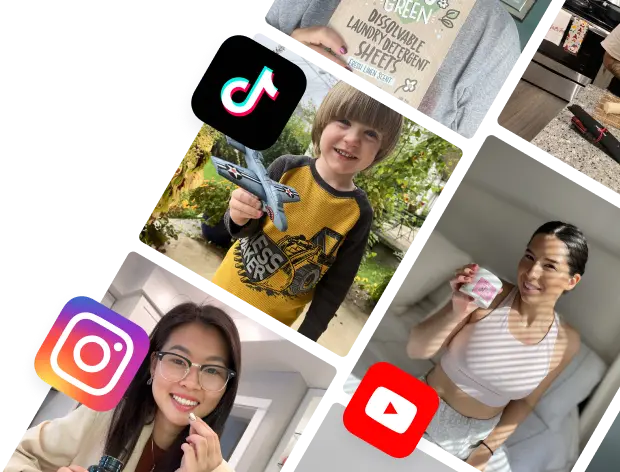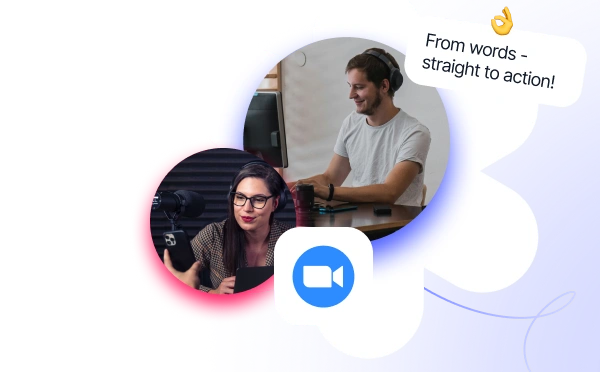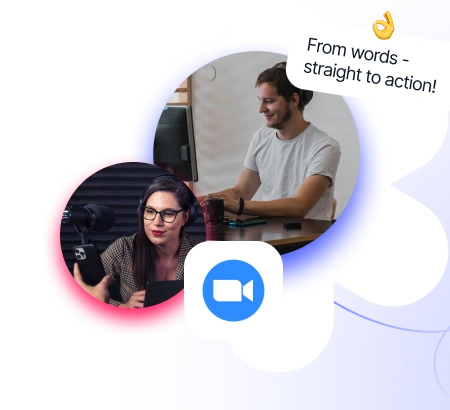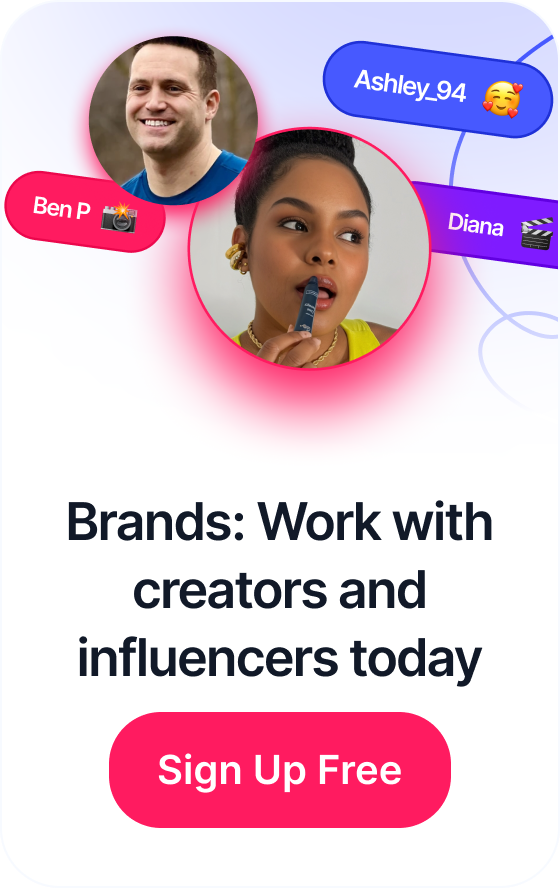 How to Work With Influencers Like a Pro
How to Work With Influencers Like a Pro
Creating amazing content is only half the battle. Without a robust plan to get it in front of the right audience, even the best blog post, video, or social media update can fall flat. For direct-to-consumer (DTC) and e-commerce brands, the digital marketplace is more crowded than ever, making effective distribution the true differentiator between visibility and obscurity. The "if you build it, they will come" approach simply doesn't work. Instead, you need a proactive, multi-pronged approach to ensure your investment in content creation pays off.
This article moves beyond generic advice to provide a deep dive into 10 actionable content distribution strategies designed to help you capture attention, drive qualified traffic, and ultimately, convert browsers into loyal customers. It's a comprehensive playbook for turning your content from a static asset into a dynamic engine for growth.
We will explore each strategy with specific implementation details, platform best practices, and optimization tips tailored for the unique challenges of the e-commerce world. You will learn not just what to do, but how to do it effectively, covering everything from amplifying reach through social media and influencer partnerships to maximizing visibility with SEO and paid advertising. Prepare to master the art and science of getting your content seen by the people who matter most to your brand.
Table of Contents
1. Multi-Channel Social Media Distribution
Multi-channel social media distribution is one of the most foundational content distribution strategies, involving the deliberate sharing of your content across multiple social media platforms. The core principle is not to simply "spray and pray," but to strategically adapt your core message for the unique audience, format, and cultural nuances of each channel. This approach maximizes your content's reach and engagement by meeting different audience segments where they are most active.
Why It Works for E-commerce
For DTC brands, this strategy is invaluable. A high-resolution product shot that excels on Instagram's visual-first feed can be repurposed into a short, engaging video for TikTok, a behind-the-scenes thread on X (formerly Twitter), or a detailed case study on LinkedIn. This allows you to leverage a single content asset to its fullest potential, building brand recognition and driving traffic from diverse sources. For example, a coordinated campaign can simultaneously capture the aesthetic-driven buyer on Pinterest and the community-focused user in a niche Facebook Group.
How to Implement This Strategy
- Start Small and Scale: Begin with 2-3 platforms where your target audience is most concentrated. Master these before expanding to avoid spreading your resources too thin.
- Adapt, Don't Just Duplicate: Modify your content for each platform. A long-form blog post can become an infographic for Pinterest, a series of quick tips for Instagram Stories, and a professional discussion starter for LinkedIn.
- Leverage Scheduling Tools: Use platforms like Buffer or Sprout Social to plan and automate posts, ensuring a consistent presence without constant manual effort. For community-driven platforms, explore specific strategies to advertise your Discord server to grow your audience effectively.
This infographic breaks down the key metrics to track when evaluating the success of your multi-channel approach.

By monitoring channel-specific conversion rates alongside overall reach, you can identify which platforms drive the most valuable actions for your brand. This data-driven insight is crucial for optimizing your content calendar and budget allocation. To dive deeper into execution, explore how to build a multi-channel marketing campaign for a complete framework.
2. Email Newsletter Marketing
Email newsletter marketing is a direct, owned content distribution strategy where you send curated content, updates, and promotions to a list of subscribers. Unlike social media, where algorithms control reach, email provides a direct line of communication to your audience. This approach is powerful for building long-term relationships, nurturing leads, and driving repeat business by consistently delivering value straight to the inbox.
Why It Works for E-commerce
For DTC brands, an email list is a high-value asset. It's an owned audience that isn't subject to the whims of third-party platforms. You can use newsletters to announce new product drops, share exclusive discounts, tell compelling brand stories, and distribute your latest blog content. For instance, a brand could send a "behind-the-scenes" look at its manufacturing process to build trust, followed by an early-access offer for subscribers, driving both engagement and sales. This direct channel often yields a higher ROI than other marketing efforts.
How to Implement This Strategy
- Offer Valuable Lead Magnets: Build your subscriber list by offering compelling incentives like a 15% discount, an exclusive e-book, or access to a webinar. Make the value proposition clear on your website and checkout pages.
- Segment Your List: Don't send the same message to everyone. Segment your audience based on purchase history, browsing behavior, or expressed interests. A customer who bought skincare gets different content than one who bought makeup.
- Optimize for Engagement: Pay close attention to your open rates and click-through rates. Experiment with compelling subject lines, personalized preview text, and optimal send times based on your audience analytics.
- Include a Clear Call-to-Action (CTA): Every email should have a purpose. Whether it’s "Shop Now," "Read the Full Post," or "Claim Your Offer," guide your subscribers toward the next step you want them to take.
3. Content Syndication Networks
Content syndication is a powerful content distribution strategy where your original content is republished by third-party websites. This approach allows you to tap into established, larger audiences that you wouldn't otherwise reach. Instead of waiting for users to find you, syndication actively places your content in front of new, relevant readers on platforms they already trust, from high-authority news sites to niche industry blogs.
Why It Works for E-commerce
For DTC brands, content syndication is an excellent way to build authority and drive referral traffic. Imagine your detailed blog post about the benefits of organic cotton being featured on a major wellness or sustainable living website. This not only positions your brand as an expert but also introduces your products to a highly qualified audience. By partnering with paid networks like Taboola or Outbrain, you can strategically place "sponsored content" on premium publisher sites, capturing top-of-funnel interest at scale.
How to Implement This Strategy
- Wait Before Republishing: To give search engines time to index your original post and avoid duplicate content issues, wait at least one to two weeks before syndicating.
- Use Canonical Tags: Always ensure the syndicated version includes a canonical tag (
rel="canonical") pointing back to the original article on your site. This tells search engines which version to prioritize, protecting your SEO equity. - Customize Content and CTAs: Slightly modify the headline or introduction to fit the syndication platform's audience. Most importantly, embed strong calls-to-action (CTAs) within the article that direct readers back to your website, a specific product page, or a newsletter signup.
- Explore Free and Paid Options: Start by republishing thought leadership pieces on free platforms like Medium or LinkedIn's publishing tool to build your personal and brand authority. For broader reach, test paid syndication networks to get your content in front of massive audiences.
4. Influencer and Partnership Distribution
Influencer and partnership distribution is a collaborative strategy that leverages relationships with influencers, industry experts, and strategic partners to share content with their established audiences. This approach amplifies reach by tapping into pre-built communities, combining the credibility of a trusted third party with targeted audience expansion. Instead of building an audience from scratch, you borrow the trust and attention that others have already cultivated.

Why It Works for E-commerce
For DTC brands, this is a powerful way to generate authentic social proof and drive sales. A brand like Glossier built its empire by partnering with beauty influencers who created genuine, user-generated-style content that resonated far more than traditional ads. Similarly, watch brand Daniel Wellington famously scaled by sending its products to a vast network of micro-influencers, flooding Instagram feeds and creating an image of widespread popularity. This strategy provides a warm introduction to potential customers, cutting through the noise of conventional advertising.
How to Implement This Strategy
- Align Audiences, Not Just Follower Counts: Thoroughly research potential partners to ensure their audience demographics and values align with your brand. A smaller, highly engaged niche audience is often more valuable than a large, generic one.
- Start with Micro-Influencers: Collaborating with micro-influencers (typically 10k-100k followers) often yields higher engagement rates and is more cost-effective. Their recommendations are often perceived as more authentic and relatable.
- Establish Clear Collaboration Guidelines: Create a clear brief that outlines deliverables, key messages, and timelines but still allows for creative freedom. This ensures brand standards are met while letting the influencer's unique voice shine through.
- Track Performance with Unique Codes: Use unique discount codes or affiliate links for each partner to accurately measure the traffic, conversions, and ROI generated from their content.
By focusing on authentic collaborations, brands can transform partners into powerful advocates. To fully understand the strategic impact, explore the core benefits of influencer marketing and how it can drive brand growth.
5. SEO-Optimized Organic Search Strategy
An SEO-optimized organic search strategy is a long-term content distribution method focused on creating and optimizing content to rank highly in search engine results pages (SERPs). Unlike paid channels that stop delivering traffic when you stop paying, this approach targets specific keywords and user intent to capture a sustainable stream of organic traffic from people actively searching for information, solutions, or products related to your brand. It’s about being the best answer when your ideal customer asks a question.
Why It Works for E-commerce
For DTC brands, an organic search strategy builds foundational, high-intent traffic that converts. While social media captures attention, SEO captures intent. A customer searching for "best eco-friendly running shoes" is much closer to purchasing than someone passively scrolling. By creating content that answers this query, a brand can intercept the customer at a critical decision-making moment. This is how brands like HubSpot and Ahrefs have built empires, not by selling directly, but by becoming the definitive educational resource in their niche, building immense trust and authority that drives sales.
How to Implement This Strategy
- Target Commercial Intent Long-Tail Keywords: Focus on specific, multi-word phrases that signal a user is close to buying (e.g., "bamboo sheet set for sensitive skin" instead of just "sheets"). These have lower competition and higher conversion rates.
- Create Comprehensive Pillar Pages and Topic Clusters: Build a main "pillar" page covering a broad topic (e.g., "The Ultimate Guide to Skincare Routines") and surround it with "cluster" content that dives into specific subtopics (e.g., "Best Moisturizers for Oily Skin"), all linking back to the pillar.
- Optimize for Featured Snippets: Structure your content with clear headings, bullet points, and numbered lists. Answer questions directly and concisely to increase your chances of being featured in Google's "position zero."
- Regularly Update and Refresh Content: Keep your top-performing articles current by updating statistics, adding new information, and refreshing examples to maintain their ranking and relevance.
By systematically addressing your audience's search queries, you position your brand as a trusted authority. This approach also extends to visual platforms. For those looking to deepen their understanding of visual search platforms, this Ultimate Pinterest SEO Guide offers comprehensive strategies to boost visibility.
6. Paid Advertising and Promotion
Paid advertising and promotion is a performance-driven content distribution strategy that leverages paid channels to deliver content directly to highly targeted audiences. Unlike organic methods that rely on algorithms and audience discovery, this approach provides immediate and predictable visibility. By using platforms like Google Ads, social media ads, and native advertising networks, brands can bypass the slow build of organic reach and place their content in front of specific demographics, interests, and behaviors with precision.
Why It Works for E-commerce
For DTC brands, paid promotion is a powerful tool for accelerating growth and driving conversions. A new product launch video or an in-depth blog post comparing product features can be amplified to reach thousands of potential customers in hours, not weeks. For example, a brand selling sustainable athletic wear can use Facebook and Instagram ads to target users interested in fitness, eco-friendly products, and competing brands. This ensures the content meant to attract and convert is seen by those most likely to make a purchase, providing a measurable return on investment.
How to Implement This Strategy
- Start Small and Scale: Allocate a modest test budget to experiment with different platforms, audiences, and ad creatives. Identify the winning combinations and then scale your ad spend on the most successful campaigns.
- Create Dedicated Landing Pages: Drive paid traffic to a specific, optimized landing page that aligns with the ad's message and call to action. This minimizes friction and improves conversion rates compared to sending users to a generic homepage.
- Implement Robust Tracking: Set up conversion tracking pixels and use UTM parameters to accurately measure performance. Proper attribution is crucial to understanding which channels and campaigns are driving sales and leads.
- Test and Iterate Constantly: Regularly A/B test different ad formats, headlines, visuals, and audience segments. The paid media landscape changes quickly, and continuous optimization is key to maintaining a competitive edge and maximizing ROI.
7. Community Building and Engagement
Community building is a relationship-focused content distribution strategy that involves creating and nurturing a dedicated space for your audience to connect. This approach moves beyond transactional interactions by fostering a sense of belonging around shared interests, values, or brand missions. Instead of just pushing content out, you are pulling an audience in, creating a loyal, self-sustaining ecosystem where members engage with your brand and each other.
Why It Works for E-commerce
For DTC brands, community is a powerful differentiator and a direct channel for feedback and advocacy. A strong community transforms customers into brand evangelists who not only buy your products but also promote them organically. For example, Peloton's integrated fitness community drives motivation and retention through leaderboards and social features, while Sephora's Beauty Insider community offers a space for users to share tips and product reviews, creating a valuable repository of user-generated content that influences purchasing decisions.
How to Implement This Strategy
- Define Clear Community Guidelines: Establish a purpose and set of rules from day one to ensure a safe, positive, and on-brand environment for all members.
- Provide Value First: Consistently offer exclusive content, early access to products, or expert Q&A sessions. Your initial goal is to give, not to take.
- Encourage Member-to-Member Interaction: Create discussion prompts, host virtual events, or run group challenges that encourage members to connect with each other, not just with your brand.
- Recognize and Reward Contributors: Actively highlight, celebrate, and reward your most engaged members. This validation encourages continued participation and sets a positive example for others.
- Use Feedback to Innovate: Treat your community as an always-on focus group. Use their insights and feedback to directly inform your content creation, product development, and overall brand strategy. This makes them feel valued and invested in your success.
8. Content Repurposing and Atomization
Content repurposing and atomization is an efficiency-focused strategy that involves breaking down a single, substantial piece of content into multiple smaller, derivative assets. Instead of creating new content from scratch for every channel, you “atomize” a core asset, like a webinar or a long-form blog post, into various formats. This approach maximizes the value and reach of your initial content creation effort, ensuring consistent messaging is distributed far and wide.
Why It Works for E-commerce
For DTC brands, this is one of the most resource-effective content distribution strategies. A single product photoshoot can be atomized into dozens of assets: a "get the look" guide for your blog, individual product shots for Instagram, a behind-the-scenes video for TikTok, and a carousel post for Facebook showcasing different styles. This strategy allows you to amplify a single campaign across all your channels without exhausting your creative team, turning one pillar piece of content into a month's worth of promotional material.
How to Implement This Strategy
- Plan for Atomization: Create your pillar content with repurposing in mind. During a video shoot, capture extra B-roll for social clips. When writing a blog post, identify key quotes, statistics, and takeaways that can easily be turned into graphics or X (formerly Twitter) threads.
- Create a Content Bank: Maintain a repository of key brand messages, powerful customer testimonials, compelling statistics, and high-quality images. This makes it easy to quickly pull elements to create new, repurposed content.
- Adapt Tone and Format: Don't just copy and paste. A professional insight from a blog post should be rephrased into a conversational, engaging question for a social media poll. The goal is to adapt the core message to fit the native language and format of each platform. For instance, ConvertKit often transforms its in-depth email newsletters into actionable blog posts and bite-sized social media carousels.
9. Video-First Distribution Strategy
A video-first distribution strategy prioritizes the creation and dissemination of video content across platforms optimized for dynamic media consumption. This approach acknowledges the dominance of video in modern digital marketing, capitalizing on its power to capture attention, convey complex information quickly, and foster deeper audience connections. Instead of treating video as an afterthought, this strategy places it at the core of your content plan.

Why It Works for E-commerce
Video is a powerhouse for DTC brands looking to showcase products in action and build authentic connections. A brand can use short-form videos on TikTok and Instagram Reels to demonstrate a product’s features, share customer testimonials, or create viral-style content that boosts brand awareness. Longer-form videos on YouTube can provide in-depth tutorials or behind-the-scenes looks at the brand's story. This multimedia approach drives higher engagement and has a direct impact on conversion rates by allowing consumers to see and understand the product in a tangible way before purchasing.
How to Implement This Strategy
- Prioritize High-Impact Hooks: The first 3-5 seconds are critical. Start your videos with a strong visual, a compelling question, or a surprising statement to stop users from scrolling.
- Optimize for Each Platform: A 10-minute YouTube deep dive won't work on TikTok. Edit and reformat your core video content for each channel’s specific audience and length requirements, ensuring you use vertical formats for mobile-first platforms.
- Invest in Quality and Accessibility: Good lighting and clear audio are non-negotiable for a professional look. Always include captions or text overlays, as many users watch videos without sound.
- Drive Action with Clear CTAs: End your videos by telling viewers exactly what to do next, whether it's "shop the link in our bio," "ask a question in the comments," or "follow for part two."
By integrating video into your content distribution strategies, you can significantly enhance audience engagement and brand recall. For brands ready to take their video advertising to the next level, understanding the nuances of platforms is key; discover effective strategies for promoting your brand with Instagram Reel ads to maximize your campaign's reach and impact.
10. Webinar and Event-Based Distribution
Webinar and event-based distribution is a powerful strategy that leverages live or recorded events to deliver in-depth, valuable content directly to an engaged audience. This approach transforms content consumption from a passive act into an interactive experience, creating a direct line of communication with potential and current customers. It's a high-touch method that excels at building authority, generating qualified leads, and nurturing relationships through education.
Why It Works for E-commerce
For DTC brands, this strategy offers a unique opportunity to demonstrate product value in a dynamic, educational setting. Instead of just showing a product, a brand can host a webinar on "Five Ways to Style Your Living Room for Spring" featuring its home decor items, or a live Q&A with a designer. This positions the brand as a helpful expert, not just a seller. For example, a skincare brand could host a masterclass with an esthetician on building a morning routine, driving both engagement and sales by showcasing its products in action.
How to Implement This Strategy
- Solve a Specific Problem: Choose webinar topics that address a key pain point or question your audience has. Focus on providing genuine value and solutions, not just a sales pitch.
- Promote Extensively: Announce your event across all channels, including email lists, social media, and paid ads, to maximize registrations. Create a dedicated landing page that clearly outlines the benefits of attending.
- Offer Exclusive Resources: Provide attendees with valuable takeaways like checklists, templates, or an exclusive discount code to reward them for their time and encourage action.
- Record and Repurpose: Always record your sessions. The recording becomes a valuable, on-demand lead generation asset that can be shared on your website, in email follow-ups, or edited into smaller clips for social media.
This video provides a framework for creating webinars that not only educate but also convert attendees into loyal customers.
By following up with attendees through personalized email sequences, you can continue the conversation and guide them further down the purchasing funnel. This direct engagement makes webinars one of the most effective content distribution strategies for building lasting customer relationships.
Content Distribution Strategies Comparison
| Strategy | Implementation Complexity 🔄 | Resource Requirements ⚡ | Expected Outcomes 📊 | Ideal Use Cases 💡 | Key Advantages ⭐ |
|---|---|---|---|---|---|
| Multi-Channel Social Media Distribution | High – requires platform customization and management | High – content creation and scheduling tools needed | Broad audience reach with diversified traffic sources | Brands targeting multiple social platforms simultaneously | Maximizes reach; reduces dependency on single algorithms; segment audience by platform |
| Email Newsletter Marketing | Moderate – requires list management and content consistency | Moderate – email software and creative resources | Builds long-term relationships; high ROI | Direct communication with subscribed audience | High ROI; algorithm independent; strong lead nurturing |
| Content Syndication Networks | Moderate – coordination with third-party platforms | Low to Moderate – content adaptation and syndication fees | Increased reach and backlinks for SEO benefit | Expanding audience beyond owned channels | Cost-effective reach; SEO gains; social proof from authoritative sites |
| Influencer and Partnership Distribution | High – requires relationship management and coordination | Moderate to High – collaboration and content co-creation | Access to targeted, engaged audiences | Leveraging trusted third-party endorsements | Increased credibility; cost-effective; authentic content |
| SEO-Optimized Organic Search Strategy | High – requires technical SEO and ongoing optimization | Moderate to High – content creation and SEO expertise | Sustainable traffic growth with high conversion potential | Long-term inbound traffic acquisition | Cost-effective long-term; builds authority; compound returns |
| Paid Advertising and Promotion | Moderate to High – requires campaign setup and management | High – ongoing ad spend and creative resources | Immediate traffic and visibility | Rapid audience targeting and content promotion | Immediate results; precise targeting; scalable |
| Community Building and Engagement | High – requires continuous management and moderation | High – dedicated platform and engagement resources | Loyal, engaged audience with brand advocacy | Building brand communities and user interaction | Strong loyalty; user-generated content; competitive advantage |
| Content Repurposing and Atomization | Moderate – requires strategic planning and format adaptation | Moderate – content editing and platform optimization | Maximized content ROI through multiple formats | Expanding content reach without new creation | Increases publishing frequency; reinforces messaging |
| Video-First Distribution Strategy | High – requires production skills and technical resources | High – video creation equipment and editing | Higher engagement and brand trust | Platforms prioritizing video content | Higher engagement; versatile formats; viral potential |
| Webinar and Event-Based Distribution | High – requires technical setup and event planning | High – platform tools and presenter/time investment | Builds relationships and generates high-quality leads | Educational and interactive audience engagement | Strong relationship building; expert positioning; content repurposing |
Activating Your Distribution Engine for Measurable Growth
You now have a comprehensive playbook of ten powerful content distribution strategies designed to elevate your e-commerce or DTC brand. From the immediate impact of multi-channel social media campaigns and paid advertising to the long-term, sustainable growth driven by an SEO-optimized organic strategy and robust community building, the path to amplifying your brand's voice is clearer than ever. We've explored how to transform a single asset into a multitude of touchpoints through content repurposing, capture engaged audiences with webinars and events, and build invaluable trust through influencer partnerships.
The core lesson is this: creating exceptional content is only the first step. True success lies in the strategic, multi-faceted delivery of that content to the right people, on the right platforms, at the right time. Your distribution plan is not a static document; it's a dynamic, living system that requires constant attention, analysis, and optimization. It's the engine that propels your brand message beyond your immediate circle, turning passive viewers into active customers and loyal advocates.
From Strategy to System: Your Actionable Next Steps
The sheer volume of options can feel overwhelming, but progress begins with focused action. Avoid the temptation to implement all ten strategies at once. Instead, adopt a methodical approach to build a distribution system that is both effective and sustainable for your team.
Here is a simple framework to get started:
- Conduct a Resource Audit: Realistically assess your current resources. What is your budget for paid promotion? How much time can your team dedicate to community management or email marketing each week? Do you have in-house video creation skills, or would you need to partner with creators?
- Select Your "Big Two": Based on your audit and primary business goals (e.g., lead generation, brand awareness, direct sales), choose two strategies to master first. A powerful combination for an e-commerce brand might be an influencer and partnership distribution plan to generate authentic user-generated content, paired with a paid advertising strategy to amplify that high-performing UGC to lookalike audiences.
- Define Key Performance Indicators (KPIs): For each chosen strategy, set clear, measurable goals. For email marketing, this could be a 35% open rate and a 4% click-through rate. For SEO, it might be ranking on the first page for five target keywords within six months.
- Implement, Measure, and Iterate: Execute your two chosen strategies for a set period, such as one quarter. Use analytics tools to track your KPIs meticulously. At the end of the period, analyze what worked, what didn't, and why. Use these insights to refine your approach or strategically layer in a third strategy.
The True Value of Mastering Content Distribution
Mastering these content distribution strategies is about more than just getting more eyeballs on your content. It's about building a predictable and scalable growth engine for your business. When your distribution is dialed in, you create a powerful feedback loop. You gain deeper insights into your audience's preferences, which informs the creation of even more resonant content. This, in turn, makes your future distribution efforts more efficient and cost-effective.
Ultimately, a well-executed distribution plan builds brand equity, fosters customer loyalty, and directly impacts your bottom line. It transforms your content from a simple marketing asset into a strategic tool that consistently drives traffic, generates leads, and secures sales. By moving from a "publish and pray" mindset to a deliberate "publish and propel" approach, you take control of your brand's narrative and its commercial success.
Ready to supercharge your influencer and user-generated content distribution? JoinBrands connects you with a vetted network of creators, making it simple to source authentic content at scale for your social media, paid ads, and video-first strategies. Stop searching for partners and start building a powerful content engine by exploring the platform at JoinBrands.








